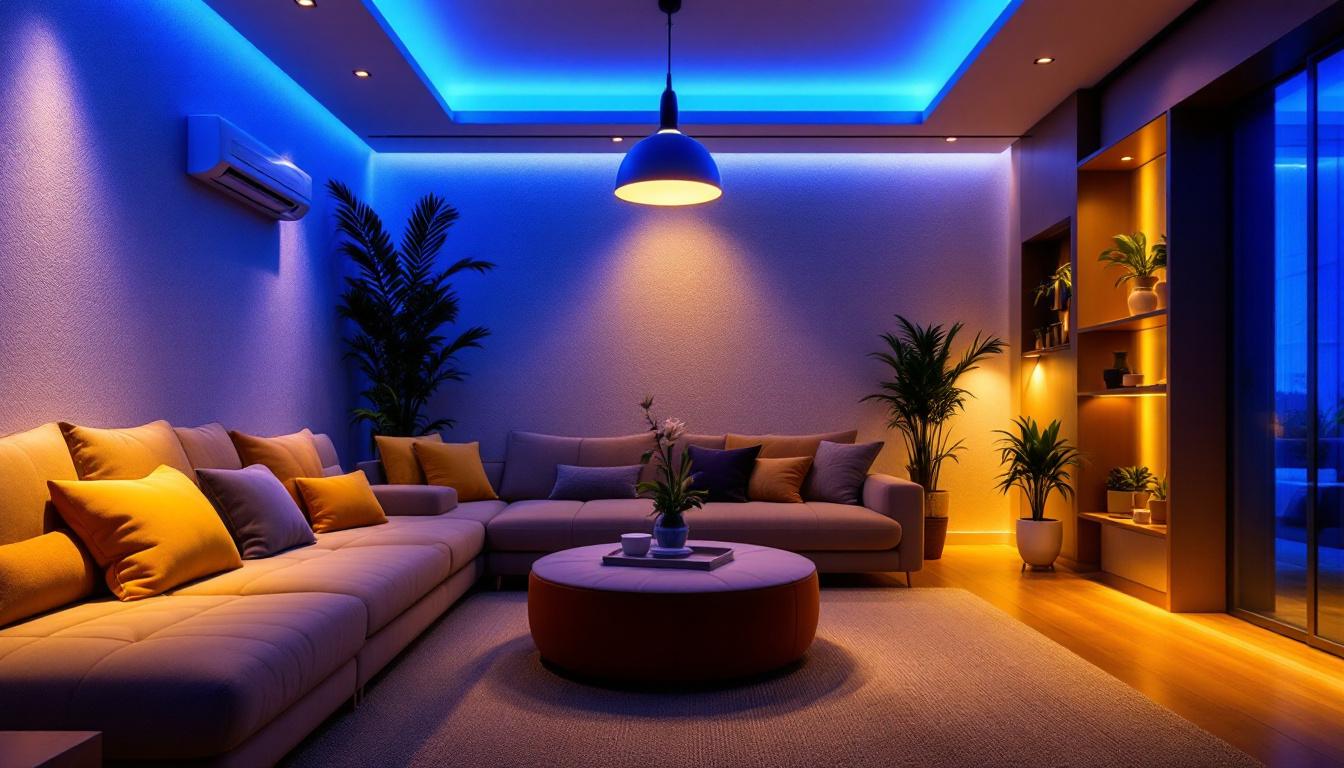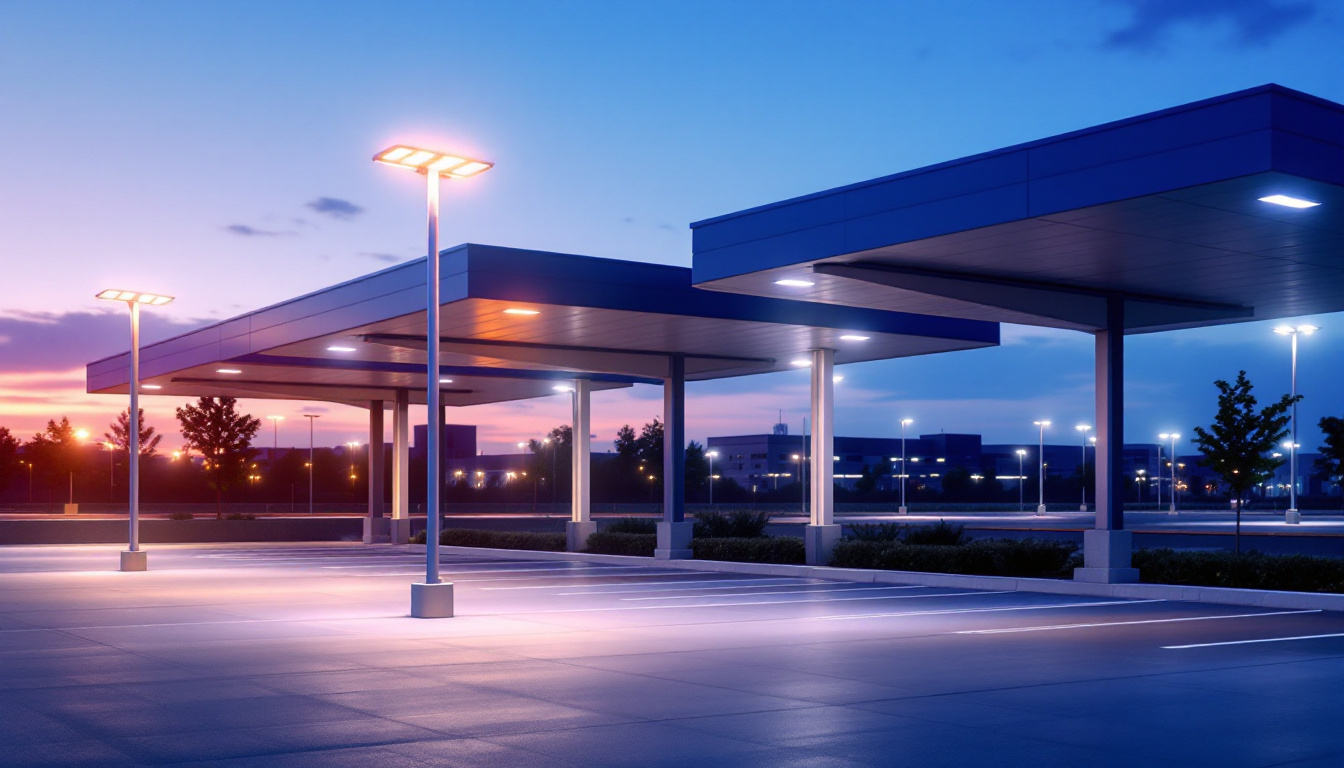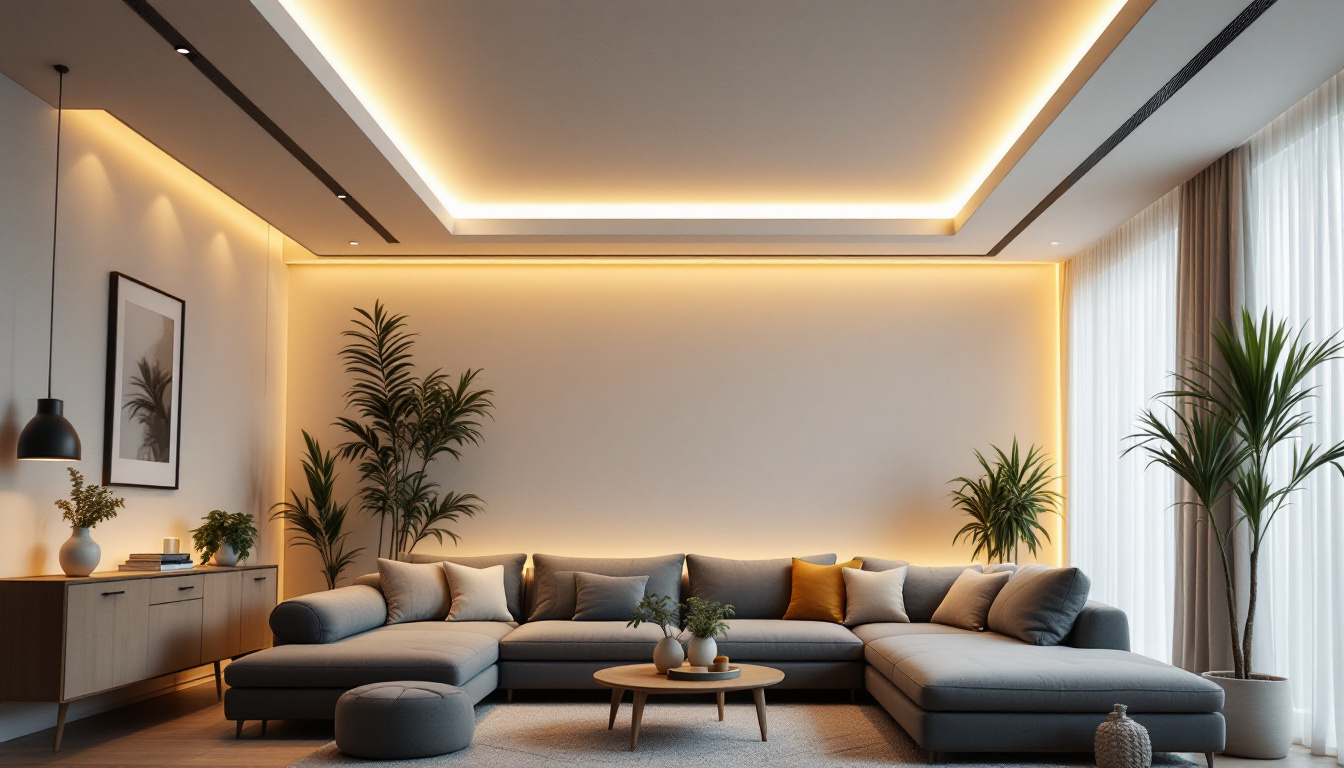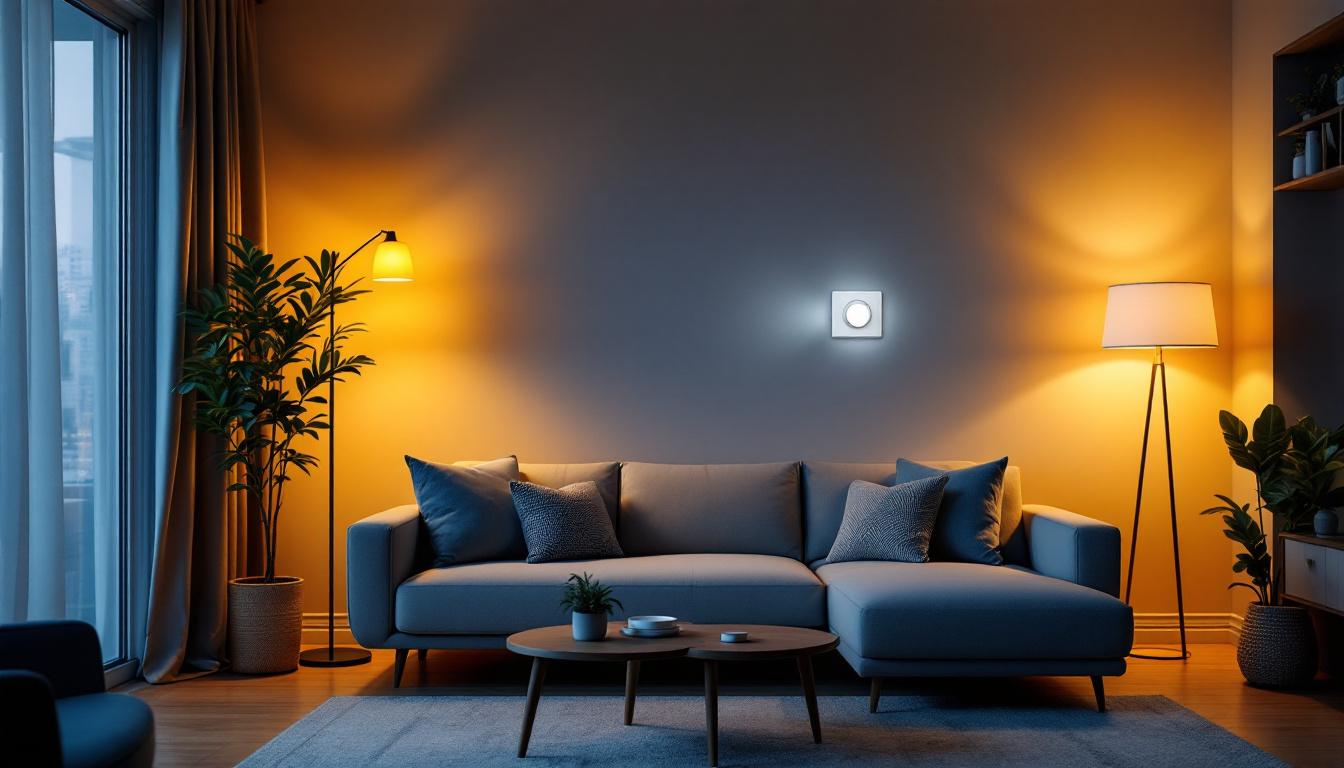
Lighting design has evolved significantly over the years, and one of the most impactful trends is the rise of indirect lighting. This style not only enhances the aesthetic appeal of spaces but also contributes to energy efficiency and overall well-being. For lighting contractors, staying updated on indirect lighting techniques and technologies is crucial for maintaining a competitive edge in the industry. This article explores the importance of indirect lighting, its benefits, and the latest trends that every lighting contractor should be aware of.
Indirect lighting refers to the illumination that is reflected off surfaces rather than being directed straight at an object. This technique creates a softer, more diffused light that can enhance the atmosphere of any space. Unlike direct lighting, which can create harsh shadows and glare, indirect lighting provides a gentle glow that is more pleasing to the eye.
Incorporating indirect lighting into designs can transform the mood of a room, making it feel warmer and more inviting. This approach is particularly effective in residential settings, commercial spaces, and even outdoor environments. Understanding the fundamentals of indirect lighting is essential for contractors aiming to deliver high-quality lighting solutions.
Indirect lighting typically involves the use of fixtures that are strategically placed to bounce light off walls, ceilings, or other surfaces. This can be achieved through various types of fixtures, including wall sconces, recessed lighting, and cove lighting. The key is to ensure that the light is directed towards a reflective surface, allowing it to diffuse throughout the space.
Moreover, the choice of materials and colors in a room can significantly influence the effectiveness of indirect lighting. Lighter surfaces tend to reflect light better, enhancing the overall brightness of the area. Therefore, contractors must consider the interplay between light and surfaces when designing lighting solutions. Textured surfaces, such as matte finishes or patterned wallpapers, can also play a role in how light is scattered, adding depth and interest to the overall design.
Indirect lighting can be applied in various settings, from residential homes to commercial spaces. In homes, it is often used in living rooms, bedrooms, and kitchens to create a cozy atmosphere. In commercial settings, such as offices and retail spaces, indirect lighting can enhance productivity and improve the shopping experience.
Additionally, outdoor spaces can benefit from indirect lighting techniques. For instance, using uplights to illuminate trees or architectural features can create a stunning visual effect while maintaining a soft glow that enhances the nighttime ambiance. Pathway lighting, achieved through low-level fixtures, can guide visitors safely while adding a touch of elegance to gardens and patios. Furthermore, the integration of smart lighting systems allows for customizable indirect lighting solutions, enabling users to adjust brightness and color temperature according to their preferences and activities, thereby maximizing the versatility of the space.
There are numerous advantages to incorporating indirect lighting into design projects. Understanding these benefits can help lighting contractors make informed decisions and provide better solutions for their clients.
One of the most significant benefits of indirect lighting is its ability to enhance the visual appeal of a space. By creating a soft, even glow, indirect lighting can highlight architectural features and create focal points without the harshness of direct lighting.
This aesthetic advantage is particularly important in high-end residential projects and commercial spaces where ambiance plays a crucial role in customer experience. Clients are often drawn to spaces that feel warm and inviting, and indirect lighting can help achieve that goal. Additionally, the versatility of indirect lighting allows for creative design possibilities; it can be used to define spaces, create visual pathways, or even enhance artwork, making it an essential element in modern interior design.
Indirect lighting can also contribute to energy efficiency. By utilizing fixtures that reflect light, contractors can reduce the overall wattage needed to achieve a desired level of brightness. This not only lowers energy costs but also aligns with the growing demand for sustainable building practices.
Moreover, many modern indirect lighting solutions incorporate LED technology, which is known for its energy efficiency and longevity. By staying updated on the latest LED products and innovations, contractors can offer clients sustainable options that reduce their carbon footprint. Furthermore, the strategic placement of indirect lighting can optimize natural light usage, allowing for a harmonious blend of artificial and daylight, which is particularly beneficial in spaces with large windows or skylights.
Another compelling reason to embrace indirect lighting is its positive impact on health and well-being. Studies have shown that lighting can significantly influence mood and productivity. Indirect lighting creates a more comfortable environment by reducing glare and harsh shadows, which can lead to eye strain and discomfort.
Incorporating indirect lighting into designs can promote a sense of calm and relaxation, making it an excellent choice for spaces such as healthcare facilities, schools, and offices. Contractors who prioritize the well-being of their clients will find that indirect lighting is a valuable tool in their design arsenal. Furthermore, the use of tunable white lighting—where the color temperature can be adjusted—can mimic natural light patterns throughout the day, supporting circadian rhythms and enhancing overall mental health. This adaptability not only makes spaces more functional but also more conducive to well-being, ultimately leading to happier and more productive occupants.
The lighting industry is constantly evolving, with new technologies and design trends emerging regularly. For lighting contractors, staying updated on these developments is essential for providing top-notch services and remaining competitive in the market.
One of the most significant trends in lighting today is the integration of smart technology. Smart lighting solutions allow users to control their lighting through apps or voice commands, offering convenience and flexibility. Indirect lighting can be seamlessly integrated into these smart systems, providing users with the ability to adjust brightness and color temperature based on their preferences.
As smart homes become increasingly popular, contractors must familiarize themselves with the various smart lighting products available. This knowledge will enable them to offer comprehensive solutions that meet the evolving needs of their clients.
Fixture design is another area where innovation is thriving. New materials and styles are emerging that enhance the effectiveness of indirect lighting. For instance, fixtures with adjustable angles can provide greater flexibility in directing light, while minimalist designs can blend seamlessly into modern interiors.
Contractors should keep an eye on the latest fixture designs and manufacturers to ensure they can offer a diverse range of options to their clients. By staying informed, they can recommend the best products that align with their clients’ aesthetic preferences and functional needs.
As sustainability continues to be a priority for many consumers, lighting contractors must be prepared to offer eco-friendly options. This includes recommending energy-efficient lighting solutions, such as LED fixtures, and materials that have a lower environmental impact.
Moreover, understanding the principles of sustainable design can help contractors create lighting plans that minimize energy use while maximizing comfort and aesthetics. By staying updated on sustainable practices, contractors can position themselves as leaders in the industry and attract environmentally conscious clients.
Successfully incorporating indirect lighting into projects requires careful planning and execution. Lighting contractors must consider various factors to ensure that the final result meets both aesthetic and functional goals.
When designing a lighting plan that includes indirect lighting, contractors should assess the layout of the space, the color palette, and the intended use of the area. Each of these factors can influence how light is distributed and perceived.
For example, in a small room, using lighter colors and strategically placed indirect lighting can create an illusion of space. Conversely, in larger areas, multiple sources of indirect light may be necessary to achieve the desired ambiance. Understanding these design principles is key to delivering effective lighting solutions.
The installation of indirect lighting requires precision and attention to detail. Proper placement of fixtures is essential to ensure that light is effectively reflected and diffused throughout the space. Contractors should be familiar with various installation techniques and best practices to avoid common pitfalls.
Additionally, ensuring that all wiring and connections are secure and compliant with local codes is crucial for safety and functionality. By adhering to industry standards, contractors can provide clients with reliable and high-quality lighting solutions.
Educating clients about the benefits and applications of indirect lighting is an essential part of the contractor’s role. Many clients may be unfamiliar with the concept or may have misconceptions about its effectiveness. By providing clear explanations and showcasing successful projects, contractors can help clients understand the value of indirect lighting.
Furthermore, offering guidance on how to use and maintain indirect lighting systems can enhance client satisfaction and build long-term relationships. Clients who feel informed and empowered are more likely to appreciate the investment they have made in their lighting solutions.
Indirect lighting represents a significant opportunity for lighting contractors to enhance their offerings and meet the evolving needs of clients. By understanding the principles of indirect lighting, staying updated on trends and technologies, and implementing effective design and installation practices, contractors can position themselves as experts in the field.
As the demand for aesthetically pleasing, energy-efficient, and health-conscious lighting solutions continues to grow, contractors who embrace indirect lighting will find themselves at the forefront of the industry. Investing time in learning about this innovative approach to lighting can lead to increased client satisfaction, improved project outcomes, and a stronger competitive edge in the marketplace.
Ready to take your lighting projects to the next level with the latest in indirect lighting solutions? At LumenWholesale, we provide lighting contractors like you with the highest quality, spec-grade lighting products at unbeatable wholesale prices. Say goodbye to local distributor markups and hello to a vast selection of reliable, high-performance lighting that meets the highest industry standards. Plus, with free shipping on bulk orders, you can stock up on premium lighting without worrying about hidden fees or compromises. Elevate your lighting designs and give your clients the best value by choosing Wholesale Lighting at the Best Value with LumenWholesale.

Discover how LED parking lot light fixtures can be your secret weapon in securing more lighting contracts.

Discover how ceiling can lighting is revolutionizing modern interiors with its sleek design and energy efficiency.

Discover the essentials of solar path lighting compliance with our comprehensive guide tailored for lighting contractors.

Discover why using a dimmer switch on LED lights is essential for energy efficiency, mood control, and bulb longevity.